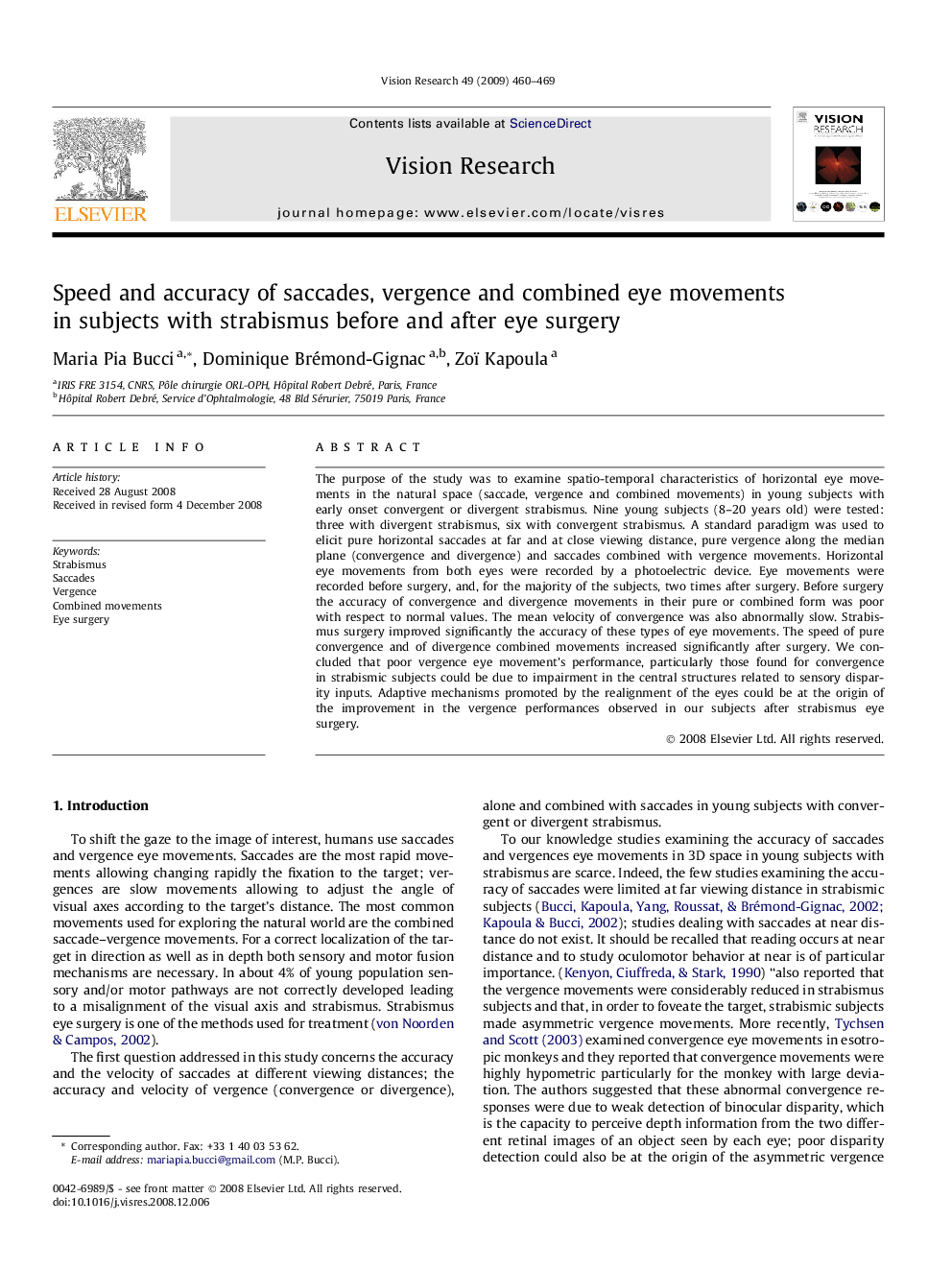| Article ID | Journal | Published Year | Pages | File Type |
|---|---|---|---|---|
| 4034855 | Vision Research | 2009 | 10 Pages |
The purpose of the study was to examine spatio-temporal characteristics of horizontal eye movements in the natural space (saccade, vergence and combined movements) in young subjects with early onset convergent or divergent strabismus. Nine young subjects (8–20 years old) were tested: three with divergent strabismus, six with convergent strabismus. A standard paradigm was used to elicit pure horizontal saccades at far and at close viewing distance, pure vergence along the median plane (convergence and divergence) and saccades combined with vergence movements. Horizontal eye movements from both eyes were recorded by a photoelectric device. Eye movements were recorded before surgery, and, for the majority of the subjects, two times after surgery. Before surgery the accuracy of convergence and divergence movements in their pure or combined form was poor with respect to normal values. The mean velocity of convergence was also abnormally slow. Strabismus surgery improved significantly the accuracy of these types of eye movements. The speed of pure convergence and of divergence combined movements increased significantly after surgery. We concluded that poor vergence eye movement’s performance, particularly those found for convergence in strabismic subjects could be due to impairment in the central structures related to sensory disparity inputs. Adaptive mechanisms promoted by the realignment of the eyes could be at the origin of the improvement in the vergence performances observed in our subjects after strabismus eye surgery.
